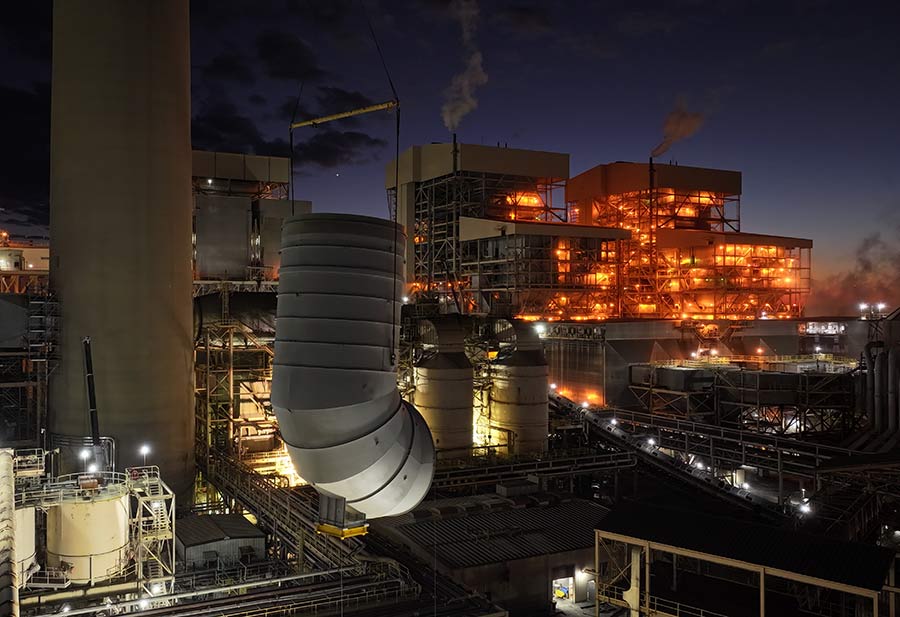
When a critical fiberglass elbow failed and fell inside the stack of Unit 1 at Santee Cooper’s Cross Generating Station on Aug. 8, 2024, it could have meant a long, costly outage for both Unit 1 and Unit 2. What followed was not just a recovery, but a bold demonstration of innovation, collaboration and engineering ingenuity.
With both units offline due to the equipment failure and with the winter peak season on the horizon, urgency drove the team to think beyond traditional solutions. Initial inspections—carried out in partnership with Industrial Access—confirmed that the remaining fiberglass and structural components could return to service. Replacing the broken section, however, posed a serious timeline challenge. The earliest available delivery for a replacement fiberglass elbow was December.
Rather than wait, the team got to work. Director of New Generation John Dills, Superintendent of Capital Projects Tom Henderson, and Senior Engineer John Browning began exploring alternative materials and methods to restore operations faster. Their mindset was clear: find a safe, creative workaround that could get the unit producing electricity again—and do it quickly.
That mindset led them to an innovative solution, a thin-walled steel replacement with epoxy coating for corrosion resistance. Steel isn’t commonly used in this application due to its weight, but the team didn’t let that stop them. They collaborated with Superior Cranes—a trusted local partner—to design a custom stationary lattice boom crane system that could safely support the heavier elbow.
This wasn’t just a patch job. It was an engineered, field-executed solution that beat the clock by months. Cross Unit 1 returned to service on Oct. 16—well ahead of the December delivery date for the permanent fiberglass elbow.
“Getting Unit 1 back online before winter was critical,” said Senior Director of Generation Carey Salisbury. “There were several days at high load in December where, if Cross 1 had still been unavailable, it could have impacted our ability to meet demand and certainly would have increased our cost to meet that demand.”
The permanent fiberglass section arrived in January 2025 and is scheduled for installation during a planned outage in the spring. Thanks to the innovative thinking, what could have been a major setback became a success story in operational resilience and engineering creativity.